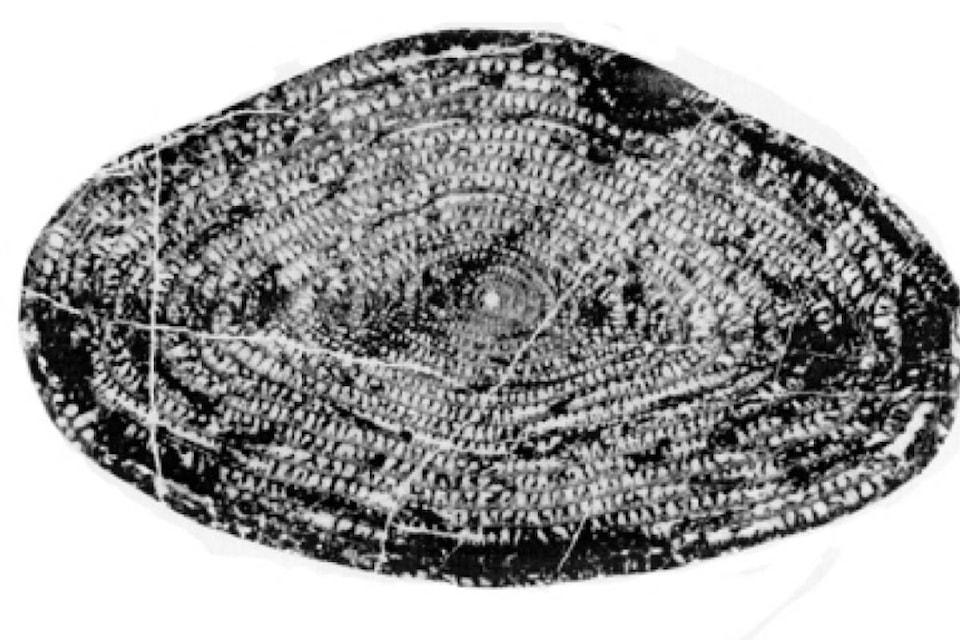The Ministry of Forests, Lands, Natural Resource Operations and Rural Development is seeking input from the public on designating a Provincial fossil to be added to the official Provincial Symbols of British Columbia, and a fossil from Marble Canyon is one of the seven candidates that residents of the province can vote for.
British Columbia’s list of official symbols and emblems includes the Pacific Dogwood (adopted as the floral emblem in 1956); Jade (adopted as official gemstone in 1968); Steller’s Jay (adopted as official bird in 1987); Western Red Cedar (adopted as official tree in 1988); the Spirit Bear (adopted as the mammal emblem in 2006); and Pacific Salmon (adopted as the fish emblem in 2013).
The designation of a Provincial fossil supports the principles of the Fossil Management Framework. The Framework recognizes fossils as important heritage resources with scientific and educational value.
Seven fossil candidates have been shortlisted through a public process, in partnership with the British Columbia Paleontological Alliance (go to http://bit.ly/2PZna8F to see the full list). The following criteria were used to select the fossil candidates; that they must:
- Be well known and easily recognizable;
- Be more or less unique to British Columbia;
- Reflect the unique geography of British Columbia;
- Have wide appeal to a general audience;
- Serve as an educational vehicle through which the biology, ecology, and geology of the time it represents can be made clear; and
- Be amenable to designs for posters, displays, and logos.
Yabeina columbiana, a one-celled fusulinid from the Permian Period of the Paleozoic Era that is 260 to 268 millions years old, is one of the candidates. Yabeina is found in the Marble Canyon Limestone of Marble Canyon, Hat Creek, and north in the Marble Range, to as far north as Atlin. This belt of rocks is called the Cache Creek terrane, after the typical exposures around Cache Creek.
Geologists and paleontologists come from all over the world to study these rocks and their contained fossils, especially Yabeina columbiana. When Yabeina lived, those parts of the province that contain the fossils were located far out in the Pacific Ocean and near the equator.
These lands did not become part of British Columbia until much later in geological time, during the Jurassic Period, about 170 million years ago, when the Cache Creek terrane collided with ancestral North America.
Permian fusulinids were first collected in British Columbia in 1872. They are now extinct, and Yabeina columbiana itself lived for only about 10 million years.
Individual Yabeina specimens probably lived like tiny snails, crawling along the shallow, warm sea bottom. Their numbers must have been in the billions, as accumulations of their shells today form entire beds of blue limestone rock.
As the British Columbia Provincial Fossil, Yabeina columbiana would represent an exciting period in the history of the formation of the west coast of North America. It is also abundant enough that everyone could collect a specimen.
The voting period will close on Friday, Nov. 23, 2018. The fossil with the most votes will be recommended for consideration as the provincial fossil emblem. You can cast your vote at http://bit.ly/2ShNRHb.
editorial@accjournal.ca
Like us on Facebook and follow us on Twitter
